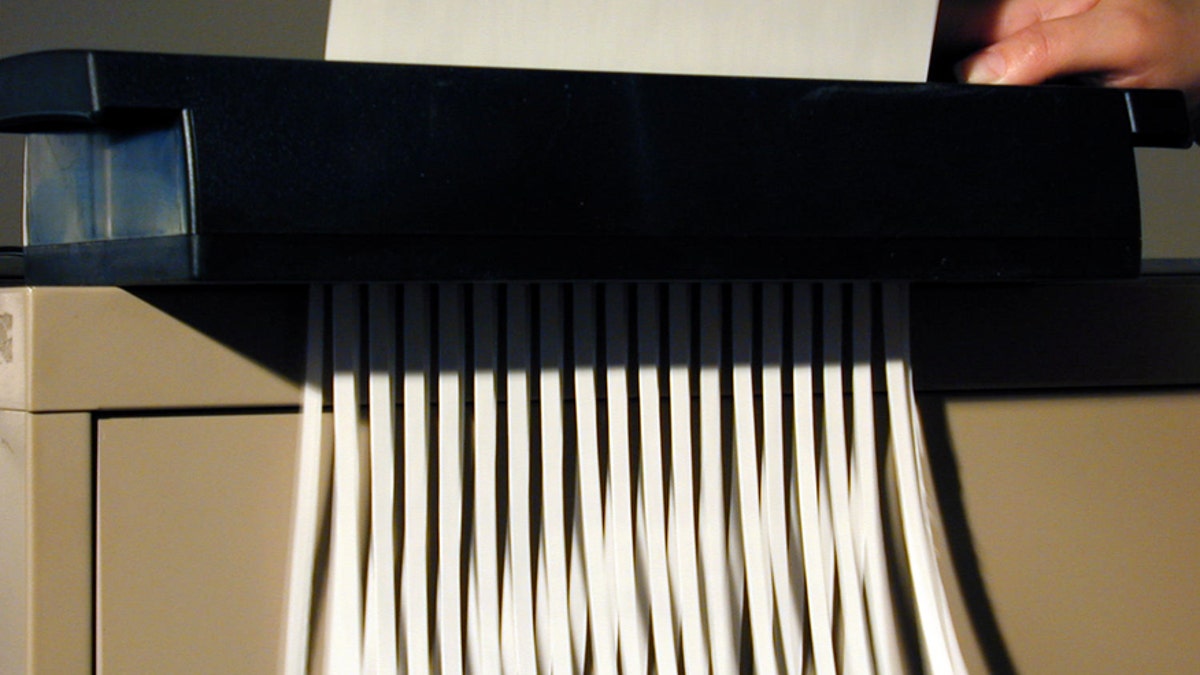
(AP)
Paper shredders have long been the tool of choice for securely disposing of sensitive paper documents, such as bank statements and doctors' bills. But just how secure are they?
In the 2012 film Argo—which told the real-life story of a CIA rescue attempt in the midst of the 1979 Iran hostage crisis—Iranians laboriously but successfully reassembled secret documents previously shredded by Americans prior to the takeover of the U.S. embassy in Teheran. In the 35 years since that event, technology has made it far easier to reassemble a shredded document than it was for the Iranians.
For an introductory price of $90 per month, or $950 per year, you can license a software product called Unshredder, which its manufacturer describes as a “shredded document reconstruction system.” That's pretty pricey for average consumers, but it could be the cost of doing business for investigators, journalists, and researchers, as well as those with less honorable intentions, such as identity thieves.
To see what this technology is capable of, I downloaded a demo of UnShredder, which shows how the product works, but won’t let you reconstruct any documents of your own. Below is a shot of the screen on which you put the pieces back together:
How the software works
First, you place all shreds on a color background and scan them into your computer as a graphical image file. From that file, Unshredder identifies each shred, and displays it so you can rotate it or move it around onscreen, the better to pair it with an adjacent shred. It’s like assembling a jigsaw puzzle, except without the image of the finished puzzle as a guide.
Some benefits that speed the work: You don’t need to handle all those small pieces of paper and a team of people can all work on the same document simultaneously.
How long it would take someone to assemble a puzzle onscreen obviously depends on the complexity of the task. But I did find out how quickly you can get those shreds into your computer for Unshredder to work on.
To do that, I used a standard wastebasket-style, cross-cut shredder to shred a letter-size printout of page one of IRS Form 1040, the page on which you put your name, address, and Social Security number. That produced 464 pieces (give or take a few shards), each measuring about an inch and a quarter long by less than a quarter of an inch wide. They were awkward to manipulate by hand, I quickly found out.
Based on the speed at which I mounted them, I calculated that it would take me about an hour to mount them all, which didn’t seem like such a long time. Here’s a portion of the shredded 1040 that I mounted:
Today, it may still take quite some time for someone trying to reconstruct a document to match pieces and solve the puzzle. But it’s bound to get quicker as technology progresses. One of these days, a product such as UnShredder may well be able to assemble those mounted shreds pieces in a few minutes, or even in seconds. At that point, it will probably become necessary for shredders to be improved.
How to protect sensitive documents you discard
- Think before you toss. Placing unwanted papers in a recycling container can expose you to identity thieves or just plain snoops, as our recent analysis of a public recycling facility found.
- Don’t manually rip or cut documents into pieces. Those are too easy for thieves to reassemble.
- Use a cross-cut shredder, not the type that cuts paper into long strips. A cross-cut creates smaller and more numerous the pieces, making reconstruction harder. For help choosing one, see our paper shredder buying guide. If you’re ready to buy, check out our paper shredder Ratings, which feature a selection of Good and Very Good models.
- Shred multiple documents into the same mix, which increases the number and complexity of the pieces.
- Feed the document so that the shredder will cut against the flow of text on each line (as shown in the shredded 1040 above) not with the text, so as not to produce strips that have easy-to-read words or sentences.
- Don’t want to become a pack rat? You'll find help on which documents to keep and which to toss in "Conquer the paper piles."
- Not sure which documents you can safely keep at home and which belong in the safe deposit box? See our paper shredder buying guide.
—Jeff Fox
Copyright © 2005-2014 Consumers Union of U.S., Inc. No reproduction, in whole or in part, without written permission. Consumer Reports has no relationship with any advertisers on this site.
